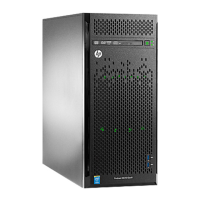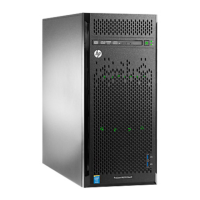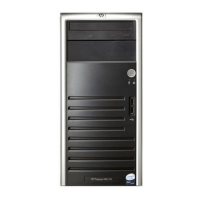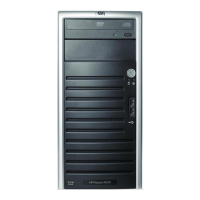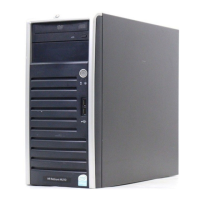Installing and Configuring
Using SCSISelect Settings
To select an option, use the arrow keys to move the cursor to the option, then press the Enter
key.
In some cases, selecting an option displays another menu. You can return to the previous
menu at any time by pressing the Esc key.
To restore the original SCSISelect default values, press the F6 key from the main SCSISelect
screen.
Configuring SCSISelect Settings
SCSI Bus Interface Definitions
•
•
•
•
•
SCSI Controller ID—(Default: 7) Sets the SCSI ID for the SCSI host bus adapter. The
Ultra320 SCSI Host Bus Adapter is set at 7, which gives it the highest priority on the
SCSI bus. We recommend that you do not change this setting.
SCSI Controller Parity—(Default: Enabled) When set to Enabled, verifies the accuracy
of data transfer on the SCSI bus. Leave this setting enabled unless any SCSI device
connected to the Ultra320 SCSI Host Bus Adapter does not support SCSI parity.
SCSI Controller Termination—(Default: Enabled) Determines the termination setting
for the SCSI host bus adapter. The default setting for both the LVD/SE and SE
connectors is Automatic, which allows the SCSI host bus adapter to adjust the
termination as needed depending on the configuration of the connected SCSI devices. We
recommend that you do not change this setting.
Boot Device Configuration
The menu displays the Master SCSI Controller information.
SCSI Device Configuration
SCSI Device Configuration options can be set individually for each connected SCSI device.
NOTE: To configure settings for a SCSI device, you must know its SCSI ID (refer to “Using SCSI Disk
Utilities” on page 2-45).
Sync Transfer Rate—(Default: 320) Determines the maximum synchronous data
transfer rate that the SCSI host adapter supports. Use the maximum value of 320
MBytes/sec. If a device is not Ultra320, select the transfer rate of the device (80, 53, 40,
...).
Packetized—(Default: Yes) Packetization creates information units (IUs) comprised of
commands, data, status information and other things. These IUs are passed as
synchronous transfers, reducing overhead and improving overall efficiency.
2-42 HP ProLiant ML150 Server Operations and Maintenance Guide
HP CONFIDENTIAL Codename: Stone Soup Part Number: 343329-001 Last Saved On: 8/14/03 10:09 AM

